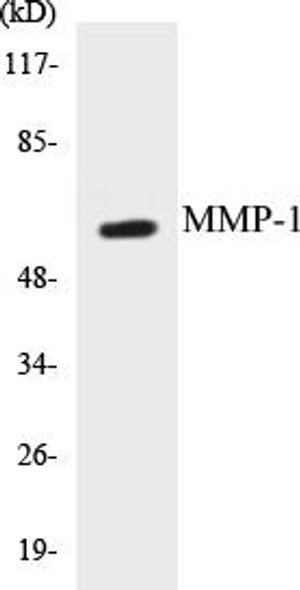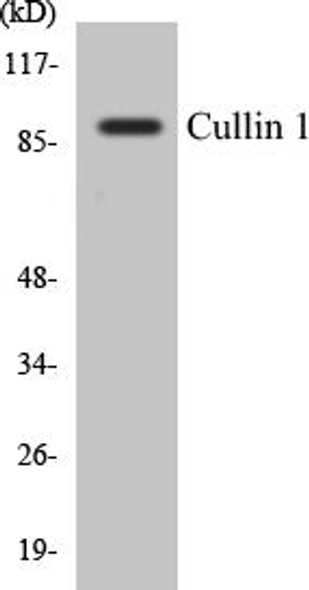Description
Pim-1 Colorimetric Cell-Based ELISA Kit
The PIM-1 Colorimetric Cell-Based ELISA Kit is a cutting-edge tool designed for the accurate and sensitive detection of PIM-1 levels in cell lysates and tissue homogenates. This kit offers high specificity and reproducibility, ensuring reliable results for a variety of research applications.PIM-1 is a key protein kinase involved in cell growth, survival, and differentiation, making it a crucial player in various physiological and pathological processes. Dysregulation of PIM-1 has been linked to cancer, inflammation, and other diseases, underscoring its importance as a biomarker for disease progression and potential therapeutic targets.
With the PIM-1 Colorimetric Cell-Based ELISA Kit, researchers can easily and effectively measure PIM-1 levels in biological samples, providing valuable insights into cellular signaling pathways and disease mechanisms. This user-friendly kit is a valuable asset for any laboratory conducting cutting-edge research in cell biology and molecular medicine.
| Product Name: | Pim-1 Colorimetric Cell-Based ELISA Kit |
| Product Code: | CBCAB00193 |
| ELISA Type: | Cell-Based |
| Target: | Pim-1 |
| Reactivity: | Human, Mouse, Rat |
| Dynamic Range: | > 5000 Cells |
| Detection Method: | Colorimetric 450 nmStorage/Stability:4°C/6 Months |
| Format: | 96-Well Microplate |
The Pim-1 Colorimetric Cell-Based ELISA Kit is a convenient, lysate-free, high throughput and sensitive assay kit that can detect Pim-1 protein expression profile in cells. The kit can be used for measuring the relative amounts of Pim-1 in cultured cells as well as screening for the effects that various treatments, inhibitors (ie siRNA or chemicals), or activators have on Pim-1.
Qualitative determination of Pim-1 concentration is achieved by an indirect ELISA format. In essence, Pim-1 is captured by Pim-1-specific primary antibodies while the HRP-conjugated secondary antibodies bind the Fc region of the primary antibody. Through this binding, the HRP enzyme conjugated to the secondary antibody can catalyze a colorimetric reaction upon substrate addition. Due to the qualitative nature of the Cell-Based ELISA, multiple normalization methods are needed:
| 1. | A monoclonal antibody specific for human GAPDH is included to serve as an internal positive control in normalizing the target absorbance values. |
| 2. | Following the colorimetric measurement of HRP activity via substrate addition, the Crystal Violet whole-cell staining method may be used to determine cell density. After staining, the results can be analysed by normalizing the absorbance values to cell amounts, by which the plating difference can be adjusted. |
| Database Information: | Gene ID: 5292, UniProt ID: P11309, OMIM: 164960, Unigene: Hs.81170 |
| Gene Symbol: | PIM1 |
| Sub Type: | None |
| UniProt Protein Function: | Pim1: a proto-oncogene serine/threonine kinase involved in cell survival and cell proliferation and thus providing a selective advantage in tumorigenesis. Exerts its oncogenic activity through: the regulation of MYC transcriptional activity, the regulation of cell cycle progression and by phosphorylation and inhibition of proapoptotic proteins (BAD, MAP3K5, FOXO3). Phosphorylation of MYC leads to an increase of MYC protein stability and thereby an increase of transcriptional activity. The stabilization of MYC exerced by PIM1 might explain partly the strong synergism between these two oncogenes in tumorigenesis. Mediates survival signaling through phosphorylation of BAD, which induces release of the anti-apoptotic protein Bcl- X(L)/BCL2L1. Phosphorylation of ASK1 an other proapoptotic protein, by PIM1, significantly decreases ASK1 kinase activity and inhibits MAP3K5-mediated phosphorylation of JNK and JNK/p38MAPK subsequently reducing caspase-3 activation and cell apoptosis. Stimulates cell cycle progression at the G1-S and G2-M transitions by phosphorylation of CDC25A and CDC25C. Phosphorylation of p21Cip1, a regulator of cell cycle progression at G1, results in the relocation of p21Cip1 to the cytoplasm and enhanced p21Cip1 protein stability. Promote cell cycle progression and tumorigenesis by down-regulating expression of a regulator of cell cycle progression, p27Kip1, at both transcriptional and post- translational levels. Phosphorylation of p27Kip1,induces 14-3-3- proteins binding, nuclear export and proteasome-dependent degradation. May affect the structure or silencing of chromatin by phosphorylating HP1 gamma/CBX3. Acts also as a regulator of homing and migration of bone marrow cells involving functional interaction with the CXCL12-CXCR4 signaling axis. Isoform 2 is isolated as a monomer whereas isoform 1 complexes with other proteins. Binds to RP9. Isoform 1, but not isoform 2, binds BMX. Isoform 2 interacts with p27Kip1 and FOXO3. Interacts with BAD. Interacts with PPP2CA; this interaction promotes dephosphorylation of PIM1, ubiquitination and proteasomal degradation. Interacts with HSP90, this interaction stabilizes PIM1 protein levels. Ubiquitinated form interacts with HSP70 and promotes its proteosomal degradation. Strongly induced in leukocytes by the JAK/STAT pathway in response to cytokines. Induced by different cellular stresses, heat shock and cytotoxic agents. Expressed primarily in cells of the hematopoietic and germline lineages. 2 isoforms of the human protein are produced by alternative initiation. Both isoforms are expressed in prostate cancer cell lines. |
| UniProt Protein Details: | Protein type:Protein kinase, CAMK; Protein kinase, Ser/Thr (non-receptor); Oncoprotein; Kinase, protein; EC 2.7.11.1; CAMK group; PIM family Chromosomal Location of Human Ortholog: 6p21.2 Cellular Component: cytoplasm Molecular Function:ATP binding; manganese ion binding; protein binding; protein serine/threonine kinase activity; ribosomal small subunit binding; transcription factor binding Biological Process: cell proliferation; multicellular organismal development; negative regulation of apoptosis; negative regulation of transcription factor activity; protein amino acid autophosphorylation; protein amino acid phosphorylation |
| NCBI Summary: | The protein encoded by this gene belongs to the Ser/Thr protein kinase family, and PIM subfamily. This gene is expressed primarily in B-lymphoid and myeloid cell lines, and is overexpressed in hematopoietic malignancies and in prostate cancer. It plays a role in signal transduction in blood cells, contributing to both cell proliferation and survival, and thus provides a selective advantage in tumorigenesis. Both the human and orthologous mouse genes have been reported to encode two isoforms (with preferential cellular localization) resulting from the use of alternative in-frame translation initiation codons, the upstream non-AUG (CUG) and downstream AUG codons (PMIDs:16186805, 1825810).[provided by RefSeq, Aug 2011] |
| UniProt Code: | P11309 |
| NCBI GenInfo Identifier: | 83305339 |
| NCBI Gene ID: | 5292 |
| NCBI Accession: | P11309.3 |
| UniProt Secondary Accession: | P11309,Q38RT9, Q5T7H7, Q96RG3, |
| UniProt Related Accession: | P11309 |
| Molecular Weight: | 35,686 Da |
| NCBI Full Name: | Serine/threonine-protein kinase pim-1 |
| NCBI Synonym Full Names: | Pim-1 proto-oncogene, serine/threonine kinase |
| NCBI Official Symbol: | PIM1 |
| NCBI Official Synonym Symbols: | PIM |
| NCBI Protein Information: | serine/threonine-protein kinase pim-1 |
| UniProt Protein Name: | Serine/threonine-protein kinase pim-1 |
| Protein Family: | Protein |
| UniProt Gene Name: | PIM1 |
| UniProt Entry Name: | PIM1_HUMAN |
| Component | Quantity |
| 96-Well Cell Culture Clear-Bottom Microplate | 2 plates |
| 10X TBS | 24 mL |
| Quenching Buffer | 24 mL |
| Blocking Buffer | 50 mL |
| 15X Wash Buffer | 50 mL |
| Primary Antibody Diluent | 12 mL |
| 100x Anti-Phospho Target Antibody | 60 µL |
| 100x Anti-Target Antibody | 60 µL |
| Anti-GAPDH Antibody | 60 µL |
| HRP-Conjugated Anti-Rabbit IgG Antibody | 12 mL |
| HRP-Conjugated Anti-Mouse IgG Antibody | 12 mL |
| SDS Solution | 12 mL |
| Stop Solution | 24 mL |
| Ready-to-Use Substrate | 12 mL |
| Crystal Violet Solution | 12 mL |
| Adhesive Plate Seals | 2 seals |
The following materials and/or equipment are NOT provided in this kit but are necessary to successfully conduct the experiment:
- Microplate reader able to measure absorbance at 450 nm and/or 595 nm for Crystal Violet Cell Staining (Optional)
- Micropipettes with capability of measuring volumes ranging from 1 µL to 1 ml
- 37% formaldehyde (Sigma Cat# F-8775) or formaldehyde from other sources
- Squirt bottle, manifold dispenser, multichannel pipette reservoir or automated microplate washer
- Graph paper or computer software capable of generating or displaying logarithmic functions
- Absorbent papers or vacuum aspirator
- Test tubes or microfuge tubes capable of storing ≥1 ml
- Poly-L-Lysine (Sigma Cat# P4832 for suspension cells)
- Orbital shaker (optional)
- Deionized or sterile water
*Note: Protocols are specific to each batch/lot. For the correct instructions please follow the protocol included in your kit.
| Step | Procedure |
| 1. | Seed 200 µL of 20,000 adherent cells in culture medium in each well of a 96-well plate. The plates included in the kit are sterile and treated for cell culture. For suspension cells and loosely attached cells, coat the plates with 100 µL of 10 µg/ml Poly-L-Lysine (not included) to each well of a 96-well plate for 30 minutes at 37°C prior to adding cells. |
| 2. | Incubate the cells for overnight at 37°C, 5% CO2. |
| 3. | Treat the cells as desired. |
| 4. | Remove the cell culture medium and rinse with 200 µL of 1x TBS, twice. |
| 5. | Fix the cells by incubating with 100 µL of Fixing Solution for 20 minutes at room temperature. The 4% formaldehyde is used for adherent cells and 8% formaldehyde is used for suspension cells and loosely attached cells. |
| 6. | Remove the Fixing Solution and wash the plate 3 times with 200 µL 1x Wash Buffer for five minutes each time with gentle shaking on the orbital shaker. The plate can be stored at 4°C for a week. |
| 7. | Add 100 µL of Quenching Buffer and incubate for 20 minutes at room temperature. |
| 8. | Wash the plate 3 times with 1x Wash Buffer for 5 minutes each time. |
| 9. | Add 200 µL of Blocking Buffer and incubate for 1 hour at room temperature. |
| 10. | Wash 3 times with 200 µL of 1x Wash Buffer for 5 minutes each time. |
| 11. | Add 50 µL of 1x primary antibodies (Anti-Pim-1 Antibody and/or Anti-GAPDH Antibody) to the corresponding wells, cover with Parafilm and incubate for 16 hours (overnight) at 4°C. If the target expression is known to be high, incubate for 2 hours at room temperature. |
| 12. | Wash 3 times with 200 µL of 1x Wash Buffer for 5 minutes each time. |
| 13. | Add 50 µL of 1x secondary antibodies (HRP-Conjugated AntiRabbit IgG Antibody or HRP-Conjugated Anti-Mouse IgG Antibody) to corresponding wells and incubate for 1.5 hours at room temperature. |
| 14. | Wash 3 times with 200 µL of 1x Wash Buffer for 5 minutes each time. |
| 15. | Add 50 µL of Ready-to-Use Substrate to each well and incubate for 30 minutes at room temperature in the dark. |
| 16. | Add 50 µL of Stop Solution to each well and read OD at 450 nm immediately using the microplate reader. |
(Additional Crystal Violet staining may be performed if desired – details of this may be found in the kit technical manual.)






